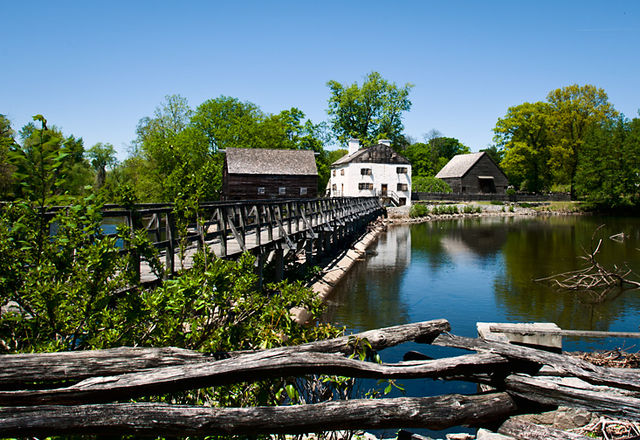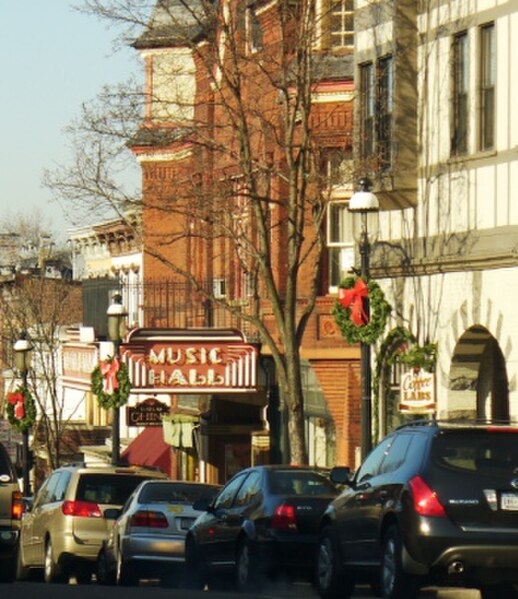The Pocantico River is a nine-mile-long (14 km) tributary of the Hudson River in western central Westchester County, New York, United States. It rises from Echo Lake, in the town of New Castle south of the hamlet of Millwood, and flows generally southwest past Briarcliff Manor to its outlet at Sleepy Hollow. Portions of the towns of Mount Pleasant and Ossining are within its 16-square-mile (41 km2) watershed.
The Pocantico as it flows through Rockefeller State Park
A weir of the Old Croton Aqueduct in Sleepy Hollow; this weir functioned to divert water to the Pocantico River for aqueduct maintenance
The river, spillway, and impoundment at the Philipsburg Manor House
Carl's Mill on the Pocantico River, Sleepy Hollow by William Rickarby Miller in 1851, depicting a small mill on the river that was one of the ancient landmarks of the Sleepy Hollow; it vanished some time before 1893.
Westchester County, New York
Westchester County is located in the U.S. state of New York. It is the seventh most populous county in the State of New York and the most populous north of New York City. According to the 2020 United States Census, the county had a population of 1,004,456, its highest decennial count ever and an increase of 55,344 (5.8%) from the 949,113 counted in 2010. Westchester covers an area of 450 square miles (1,200 km2), consisting of six cities, 19 towns, and 23 villages. Established in 1683, Westchester was named after the city of Chester, England. The county seat is the city of White Plains, while the most populous municipality in the county is the city of Yonkers, with 211,569 residents per the 2020 census. The county is part of the Hudson Valley region of the state.
Philipsburg Manor House in Sleepy Hollow
The New Croton Reservoir is the largest of many in the county.
Philipse Manor Hall in Yonkers
Tarrytown Music Hall on Main Street








